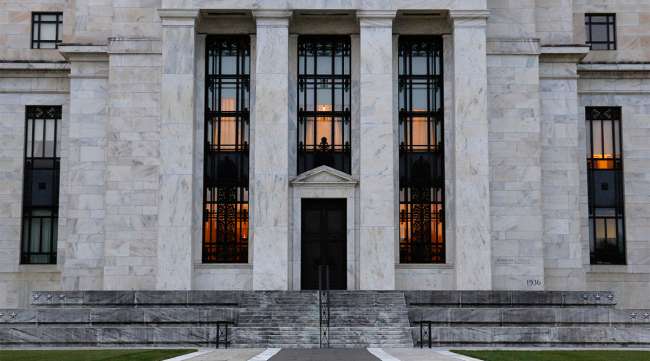Stock Futures Tumble Despite Fed Interest Rate Cut to Near Zero

[Stay on top of transportation news: Get TTNews in your inbox.]
U.S. stock futures tumbled, wiping out half of the furious last-hour rally March 13 and tripping exchange trading curbs, as investors worried that emergency measures by the Federal Reserve will fall short of cushioning the coronavirus’ blows to the economy.
Contracts on the S&P 500, whose violent swings have now triggered limits in five of the past six sessions, dropped 4.8% to 2,555.50 as of 6:50 p.m. EDT in New York. While the triggering of limit-down circuit breakers arrests big drops, it also leaves traders in the dark as to the full extent of losses. Last week, investors had to wait till the 4 a.m. start of premarket trading in New York to see how far exchange-traded funds tracking major benchmarks had declined.
U.S. equities are coming off their first back-to-back 9% swings since the Great Depression, with investors rattled by the virus and its potential to derail global growth. Goldman Sachs cut its GDP forecasts for the first half, Nike closed stores in North America and Apple shut all stores outside of China. Fed Chairman Jerome Powell said economic growth is likely to be “weak” in the second quarter.
“They had no choice, but it won’t be enough in the grand scheme of things,” said Jeff Mills, chief investment officer of Bryn Mawr Trust. “We need large fiscal programs, which, based on the recent communication from the treasury secretary, it seems clear we will be getting.”
The extreme volatility of recent sessions makes it difficult to consider futures a perfect litmus for grading the Fed’s response. Contracts bounced between exchange-enforced volatility limits throughout last week, while March 13 saw the biggest U.S. stock market rally in 12 years. That surge may have been attributable in part to expectations the Fed would act over the weekend.
Similar turbulence has gripped markets around the world amid an outbreak that threatens to plunge the global economy into recession. Gauges of stock swings hit levels last seen in the financial crisis and the S&P 500 notched back-to-back 9% moves for the first time since the 1930s on March 12 and 13.
“What a roller-coaster ride this is turning out to be,” Erik Nielsen, group chief economist at UniCredit, wrote in a note. “I never thought I would see such volatility, intra-day moves and general dislocations again in highly developed markets.”
“We tend, in the midst of bear markets, in these crises, to see big, big swings like this, both on the downside and the upside,” said Jennifer Ellison, principal at San Francisco-based wealth-advisory firm BOS. “We get this self-fulfilling prophecy. When markets are down and they start to spiral, everybody wants to run for the exits. And then they think they missed out on the bottom and they run back in.”
Want more news? Listen to today's daily briefing:




